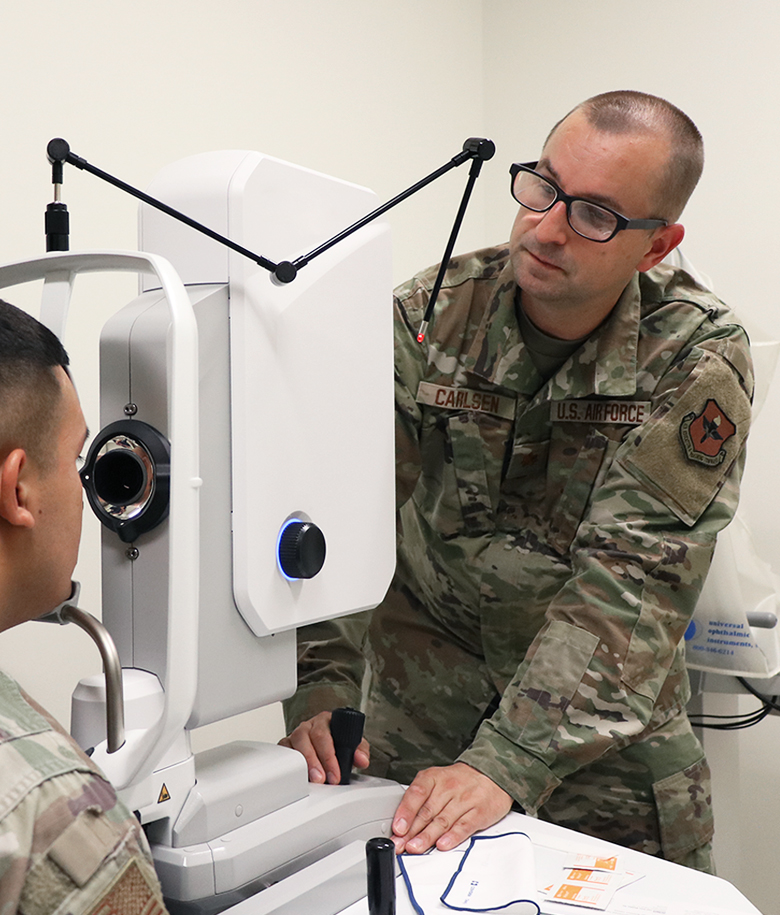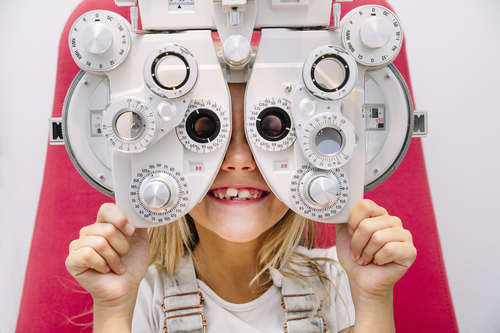Checking Out the current Technical Advancements in Optometry and What They Mean for Eye Doctors
In the ever-evolving field of optometry, recent technological improvements are improving how specialists come close to eye treatment. From the precision of Optical Coherence Tomography to the nuanced understandings supplied by AI-driven analysis devices, these technologies are establishing brand-new standards in individual assessment and therapy. Teleoptometry is poised to redefine accessibility, making sure that expertise transcends geographical limitations. As these developments penetrate the technique, optometrists are confronted with the difficulty of welcoming these tools to boost individual end results. The question stays: exactly how will these technological shifts redefine the roles and duties within the profession?
Developments in Diagnostic Tools
Progressing the area of optometry, technologies in diagnostic devices have actually transformed the way eye care experts assess and identify eye conditions and aesthetic problems. The past years has actually experienced substantial technical developments, enabling even more exact and thorough analyses.
An additional key advancement is the intro of innovative corneal topography systems, which map the surface curvature of the cornea with precision. These tools are particularly advantageous for fitting call lenses and diagnosing corneal conditions. Electronic retinal imaging has transformed traditional ophthalmoscopy, using comprehensive, breathtaking views of the retina that facilitate thorough visual examinations.
The advancement of wavefront aberrometry has actually also been critical, allowing the analysis of refractive errors with unparalleled precision (Optometrist Chino). This modern technology assists in customizing corrective lenses and enhancing surgical results for refractive surgical procedures. Collectively, these diagnostic advancements encourage optometrists to provide exceptional individual care, making sure early treatment and customized treatment strategies, eventually boosting aesthetic wellness results
AI in Person Administration
Building on the structure of cutting-edge analysis devices, the unification of artificial intelligence (AI) in person management represents a transformative leap for optometry. AI systems are significantly utilized to boost effectiveness, precision, and customization in person treatment. By evaluating large amounts of information, AI can identify patterns and forecast prospective eye problems, enabling eye doctors to tailor treatments much more efficiently. This capacity is vital in handling persistent eye illness such as glaucoma and diabetic retinopathy, where very early discovery and constant tracking are vital.
Moreover, AI-driven platforms promote streamlined client communications and management processes. Automated scheduling, digital assessments, and individualized follow-up strategies not just improve individual satisfaction yet additionally optimize time monitoring for experts. These systems can triage clients based upon the seriousness of their problems, making certain that those in vital demand receive prompt interest.
Moreover, AI boosts decision-making by providing optometrists with evidence-based recommendations and treatment pathways. By incorporating information from electronic wellness records, AI tools provide insights that notify scientific choices, lowering the danger of errors and boosting patient outcomes. As AI remains to develop, its function in client administration will likely increase, improving the landscape of optometric treatment.
Advances in Retinal Imaging
In the realm of optometry, retinal imaging has witnessed amazing technological innovations that are enhancing diagnostic abilities and person care. Innovations such as Optical Comprehensibility Tomography (OCT) and fundus digital photography have actually revolutionized how eye doctors visualize and evaluate the retina. OCT, in specific, supplies high-resolution, cross-sectional pictures of the retina, enabling for the comprehensive evaluation of its layers. This ability is vital for early detection and monitoring of problems like glaucoma, diabetic retinopathy, and age-related macular deterioration.
Enhanced imaging modalities like OCT angiography are additional refining diagnostic accuracy. This non-invasive technique maps blood circulation in the retina, offering essential insights right into vascular health and wellness without the need for color injections. In addition, adaptive optics modern technology is being integrated right into retinal imaging systems to correct ocular aberrations, supplying unprecedented photo clarity. Such improvements facilitate the recognition of min retinal changes that can signify illness development.
Moreover, innovations in expert system are enhancing retinal imaging by making it possible for computerized evaluation of large datasets. These systems assist optometrists in determining patterns a sign of pathology, therefore enhancing diagnostic accuracy and effectiveness. Jointly, these advancements are changing retinal imaging right into a keystone of modern-day eye care, enhancing outcomes and increasing therapeutic opportunities.
Teleoptometry's Growing Role
Teleoptometry is increasingly coming to be a crucial element of eye care, driven by innovations in digital communication and analysis tools. This is specifically helpful in underserved and rural locations where access to specialized eye treatment is usually minimal.
The assimilation of synthetic knowledge (AI) additional enhances teleoptometry, allowing the analysis of aesthetic information and aiding in the detection of ocular problems such as glaucoma and diabetic person retinopathy. AI-powered formulas can swiftly translate intricate imaging data, providing eye doctors with valuable insights that boost clinical decision-making.
In addition, teleoptometry supports connection image source of treatment via smooth combination with electronic wellness documents (EHRs), allowing eye doctors to maintain detailed patient backgrounds. This ensures that individuals receive constant and personalized care even when seeking advice from with different specialists.
In spite of these benefits, obstacles continue to be, including guaranteeing data protection and handling individual assumptions. Teleoptometry represents a significant stride towards more easily accessible, reliable, and patient-centered eye treatment. As modern technology evolves, its role is poised to expand even more.

Future Trends in Eye Care
A myriad of innovative trends is readied to reshape the future of eye treatment, driven by technical improvements and the progressing requirements of individuals. One considerable fad is the combination of man-made knowledge (AI) in diagnostics, which guarantees to enhance the accuracy and performance of eye assessments. AI algorithms can evaluate vast quantities of information from retinal pictures, potentially detecting problems like diabetic retinopathy and glaucoma earlier than conventional methods.
In addition, tailored medicine is gaining grip in optometry, with genetic screening educating personalized treatment strategies. This technique aims to optimize person end results by customizing interventions to private hereditary accounts. Wearable technology, such as clever get in touch with lenses, is also imminent, providing real-time monitoring of intraocular stress or sugar levels, hence supplying continuous understandings into eye and systemic health and wellness.
The fostering of enhanced fact (AR) and online fact (VR) in training and person education is an additional emerging pattern. These technologies offer immersive experiences that can boost understanding and skills both for clients and eye doctors. As these trends advance, optometrists have find out here to stay abreast of technical developments to give innovative treatment, ensuring enhanced patient end results and satisfaction in the vibrant landscape of eye treatment.
Conclusion

Jointly, these diagnostic developments empower eye doctors to provide exceptional patient treatment, making sure early treatment and customized treatment strategies, inevitably improving visual health results.

As these technologies try this site continue to advance, optometrists should adjust and include them into method, eventually maximizing workflow effectiveness and raising the criterion of eye treatment delivered to clients.